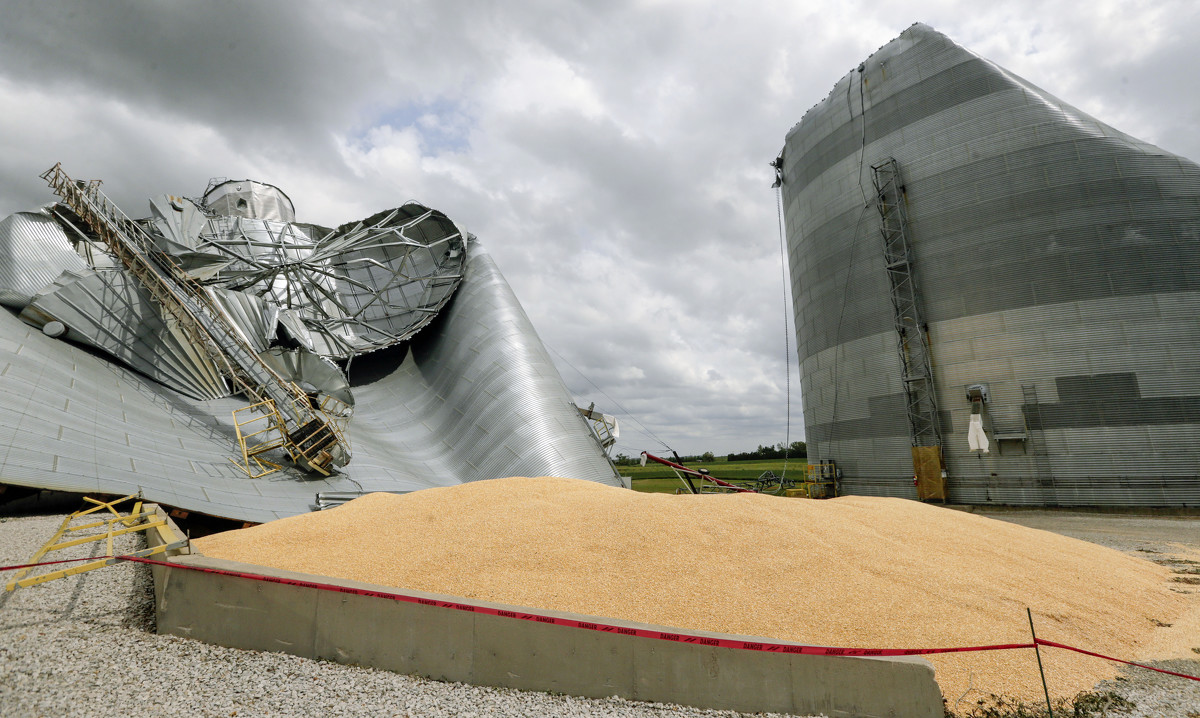
Grain bins are seen severely damaged on the Archer Daniels Midland facility in Keystone, Iowa, on Wednesday, Aug. 12, 2020. A storm slammed the Midwest with straight line winds of up to 100 miles per hour on Monday, gaining strength as it plowed through Iowa farm fields, flattening corn and bursting grain bins still filled with tens of millions of bushels of last year's harvest. (Jim Slosiarek/The Gazette via AP)
DES MOINES, Iowa (AP) - Farmers across a wide swath of Iowa are dealing with the heartbreaking aftermath of a rare wind storm that turned what was looking like a record corn crop into deep losses for many.
The storm, known as a derecho, slammed the Midwest with straight line winds of up to 100 miles per hour on Monday, gaining strength as it plowed through Iowa farm fields, flattening corn and bursting grain bins still filled with tens of millions of bushels of last year's harvest.
"It's a problem of two years of crops here. You're still dealing with what you grew last fall and you're trying to figure out how to prepare for what you're growing this fall," said Iowa State University agriculture economist Chad Hart.
Farms in Illinois and Indiana also reported crop and property damage, but not to the extent seen in Iowa.
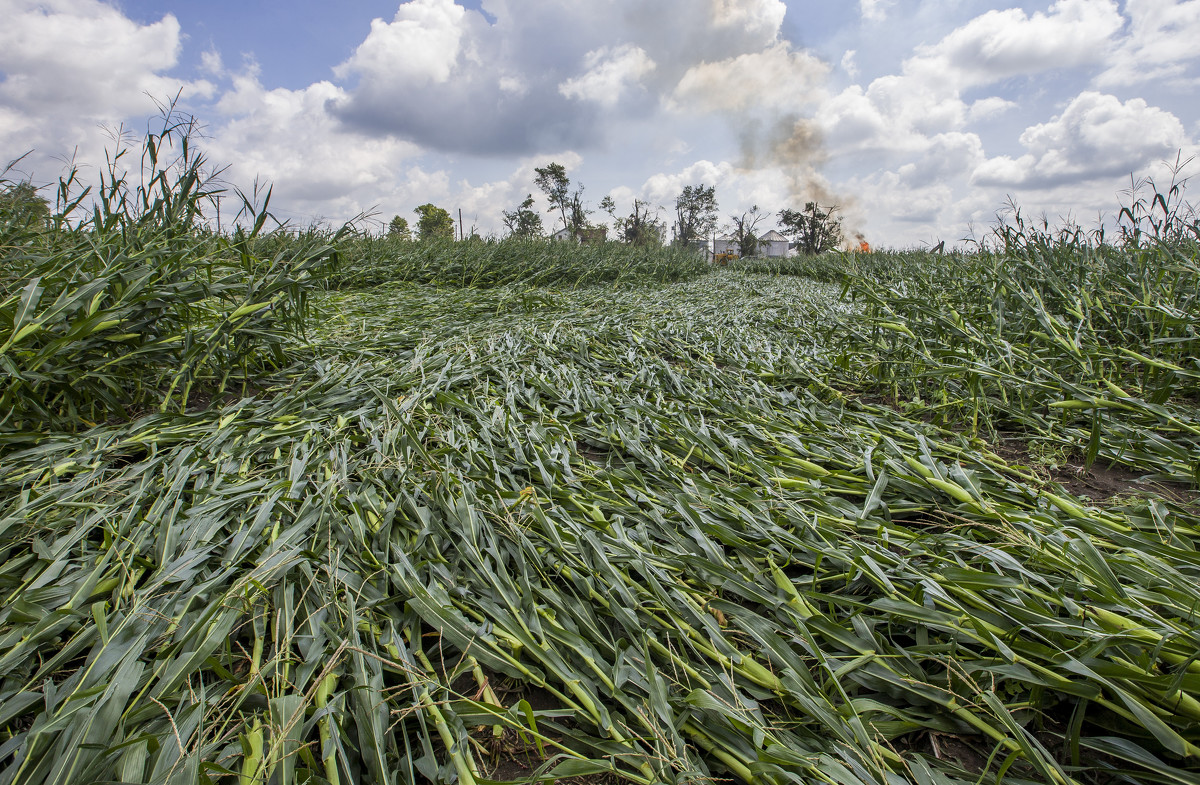
The path of a possible tornado is evident in a cornfield after a powerful storm on Tuesday, Aug. 11, 2020, in Wakarusa, Ind. (Robert Franklin/South Bend Tribune via AP)
Before the storm hit, the U.S. Department of Agriculture had been expecting a record national corn crop this year of 15.3 billion bushels harvested from about 84 million acres. Iowa was to provide about 18% of that production. Iowa's crop was valued at about $9.81 billion in 2019.
The Iowa Corn Growers Association said it is too soon to accurately describe how much of this year's crop was lost. Iowa Secretary of Agriculture Mike Naig said Tuesday that tens of millions of bushels of grain stored at farm cooperatives and privately on farms were damaged or destroyed.
Western Iowa has been declared an extreme drought zone and corn plants there were already weakened due to a lack of moisture. Those fields are likely a loss, Hart said.
According to a USDA report dated Aug. 1, farmers in much of central and eastern Iowa had been expecting near-record yields with healthy plants that could bounce back. For now, much depends on whether the plants snapped off or were just bent over by wind.
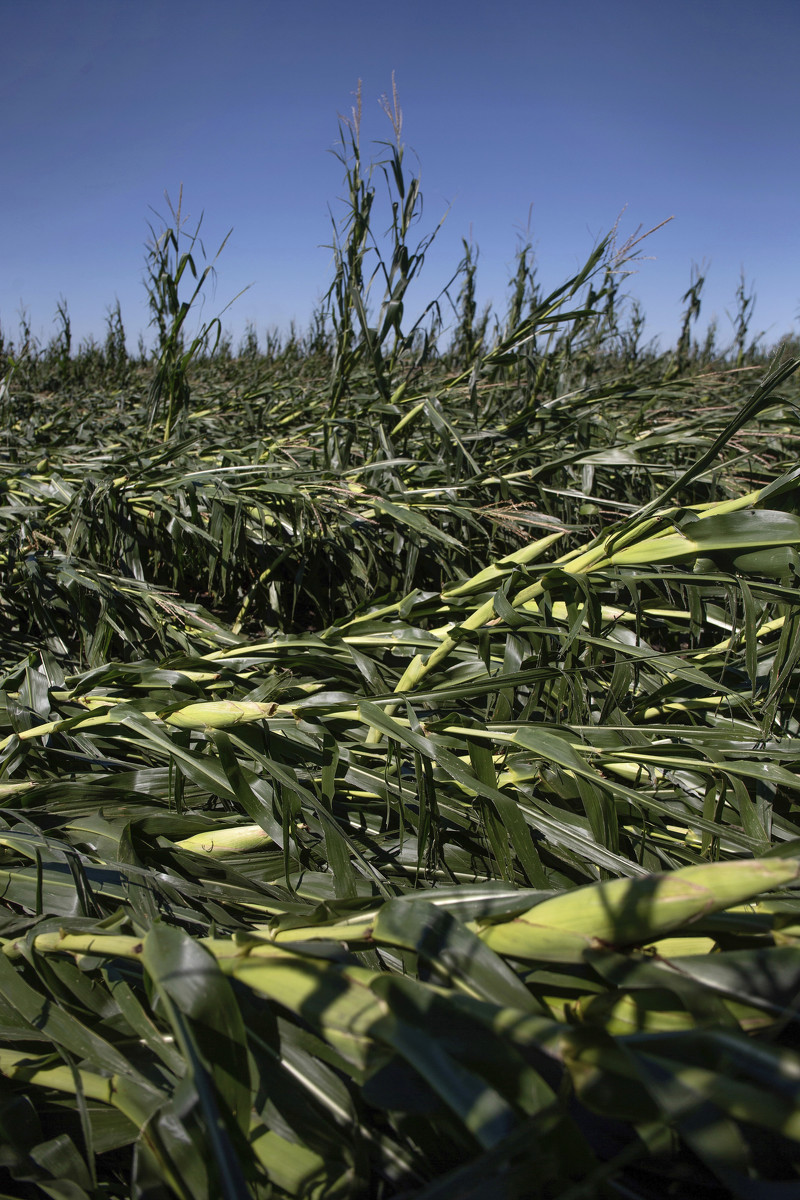
Crops flattened by the derecho that passed through Monday lie in a field near Polk City, Iowa, Tuesday, Aug. 11, 2020. The storm slammed the Midwest with straight line winds of up to 100 miles per hour on Monday, gaining strength as it plowed through Iowa farm fields, flattening corn and bursting grain bins still filled with tens of millions of bushels of last year's harvest. (Olivia Sun/The Des Moines Register via AP)
"There's a lot more breakage or pinching of stalks than I thought there was now that I've been out and looked at more of it. That, of course, essentially has killed the plant," said Meaghan Anderson, an Iowa State University extension agronomist who works with farmers in nine central Iowa counties.
Corn is flat on the ground in numerous fields in the region, Anderson said. The corn stalks had grown to full height and were in the final stages of producing ears and filling them out with kernels. Modern corn varieties can grow up to 8 feet tall making them vulnerable to powerful straight line winds.
For plants that were bent, and stalks not broken, there's some hope, with a significantly reduced yield. But it will be difficult to harvest. If the stalks snapped, the plant will die. Those fields will be chopped and used as livestock feed.
Iowa Corn Growers Association CEO Craig Floss surveyed the storm damage on his father's farm east of Des Moines on Wednesday. He found two machine sheds destroyed and grain bins significantly damaged. The corn was flattened and the family home in need of repair.
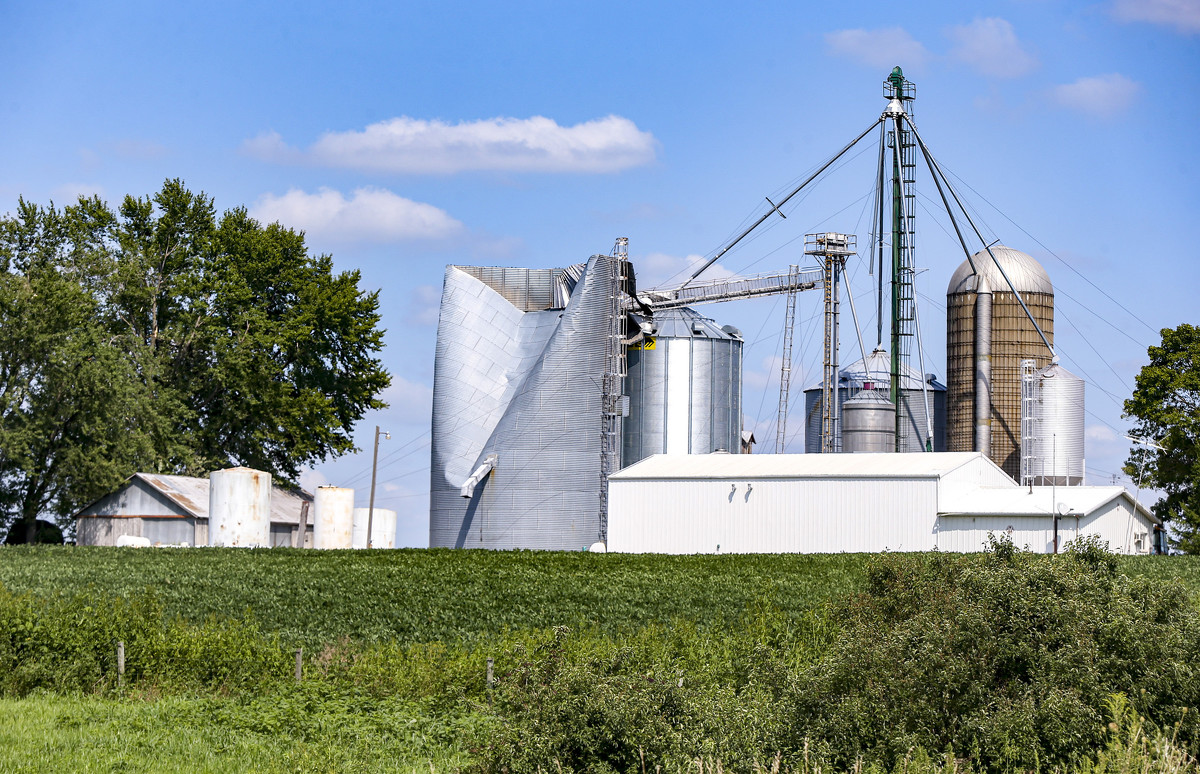
A damaged silo stands Wednesday, Aug. 12, 2020, near Solon, Iowa. Farmers across a wide swath of Iowa are dealing with the aftermath of a rare wind storm that turned what was looking like a record corn crop into deep losses for many. (Andy Abeyta/The Gazette via AP)
"The main message out there to folks is this really comes at a time when farmers are already significantly hurting due to the pandemic and trade disputes," he said.
"There's a lot of stress in the countryside. ... It was already very stressful," Floss said. "This just adds insult to the injury that was already there."
Crop insurance programs will help with corn in the field as will a USDA indemnity program. Federal disaster aid could be coming if a presidential disaster is declared.
Bins were full as farmers were hanging on to last fall's crops in hopes of improved prices. The USDA estimates about about 2.8 billion bushels remain in storage.
"We carried more grain than usual through the springtime and here into the summer, and now the derecho got ahold of some of that grain and we're going to end up losing a significant chunk of value because it became vulnerable to the weather," Hart said.
There's no federal program to help farmers who lost stored grain, he said. Some may have private insurance to help but most will likely wait to see if federal or state programs are initiated.
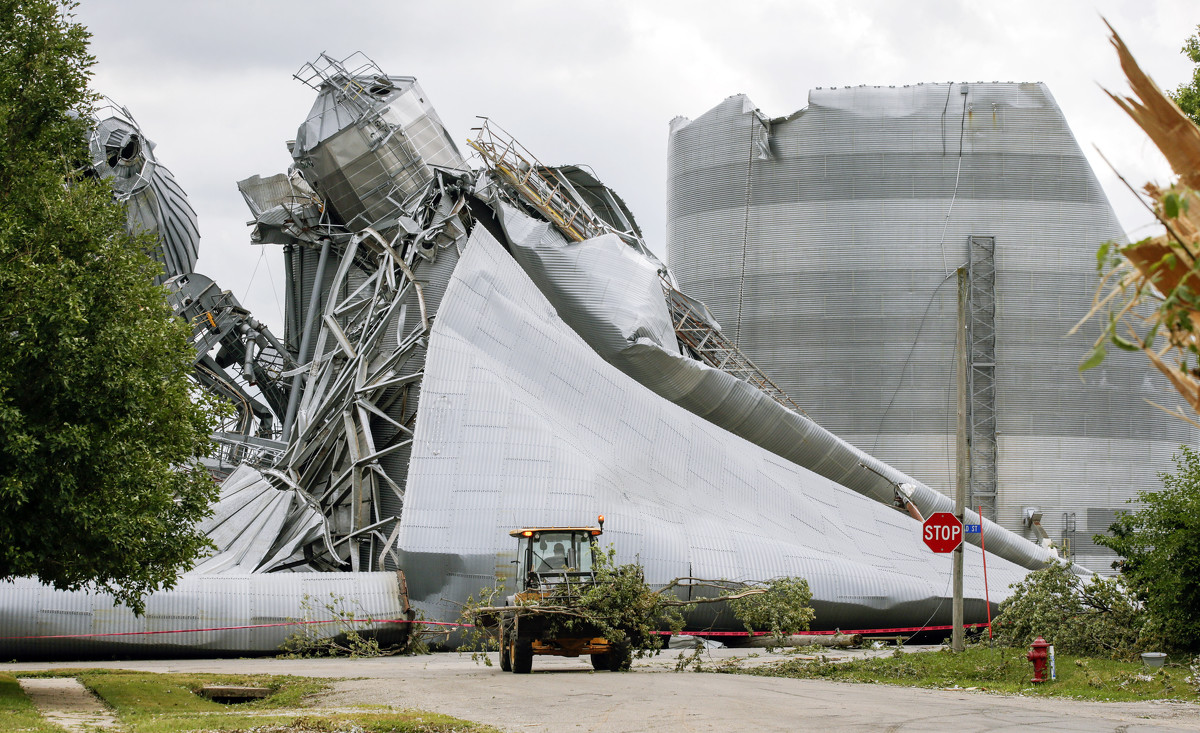
Iowa Department of Transportation workers help with tree debris removal as grain bins from the Archer Daniels Midland facility are seen severely damaged in Keystone, Iowa, on Wednesday, Aug. 12, 2020. A storm slammed the Midwest with straight line winds of up to 100 miles per hour on Monday, gaining strength as it plowed through Iowa farm fields, flattening corn and bursting grain bins still filled with tens of millions of bushels of last year's harvest. (Jim Slosiarek/The Gazette via AP)
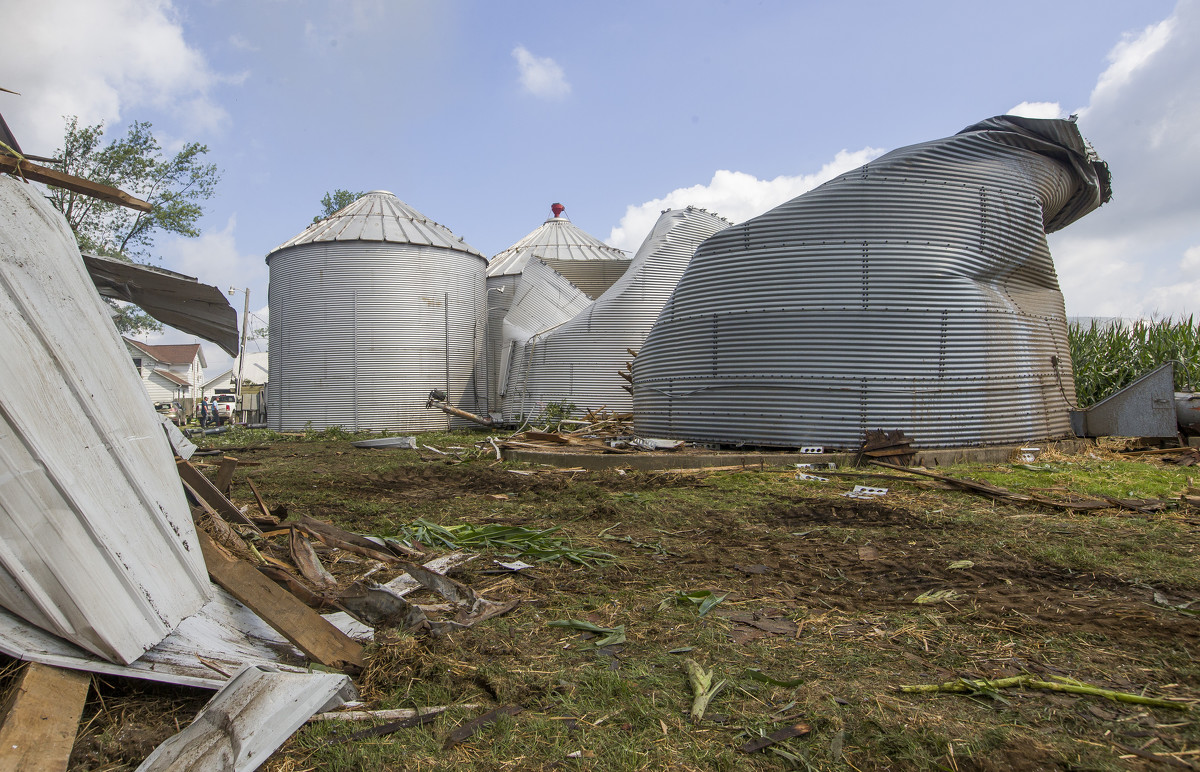
Residents begin cleaning up storm damage from dangerous straight-line winds and possible tornadoes caused by a rare derecho on Tuesday, Aug. 11, 2020, in Wakarusa, Ind. (Robert Franklin/South Bend Tribune via AP)
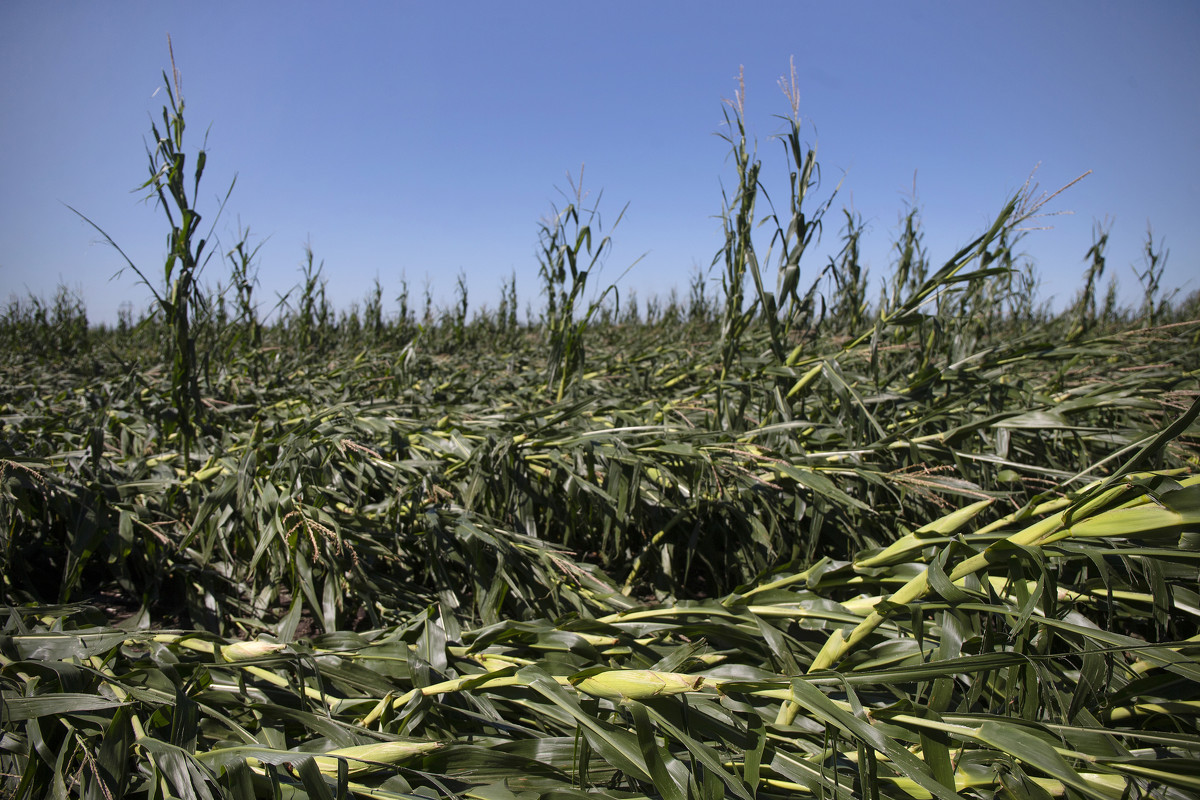
Damaged corn crops lie in a field on Tuesday, Aug. 11, 2020, in Polk City, Iowa. Farmers across a wide swath of Iowa are dealing with the heartbreaking aftermath of a rare wind storm, known as a derecho, that turned what was looking like a record corn crop into deep losses for many. (Olivia Sun/The Des Moines Register via AP)
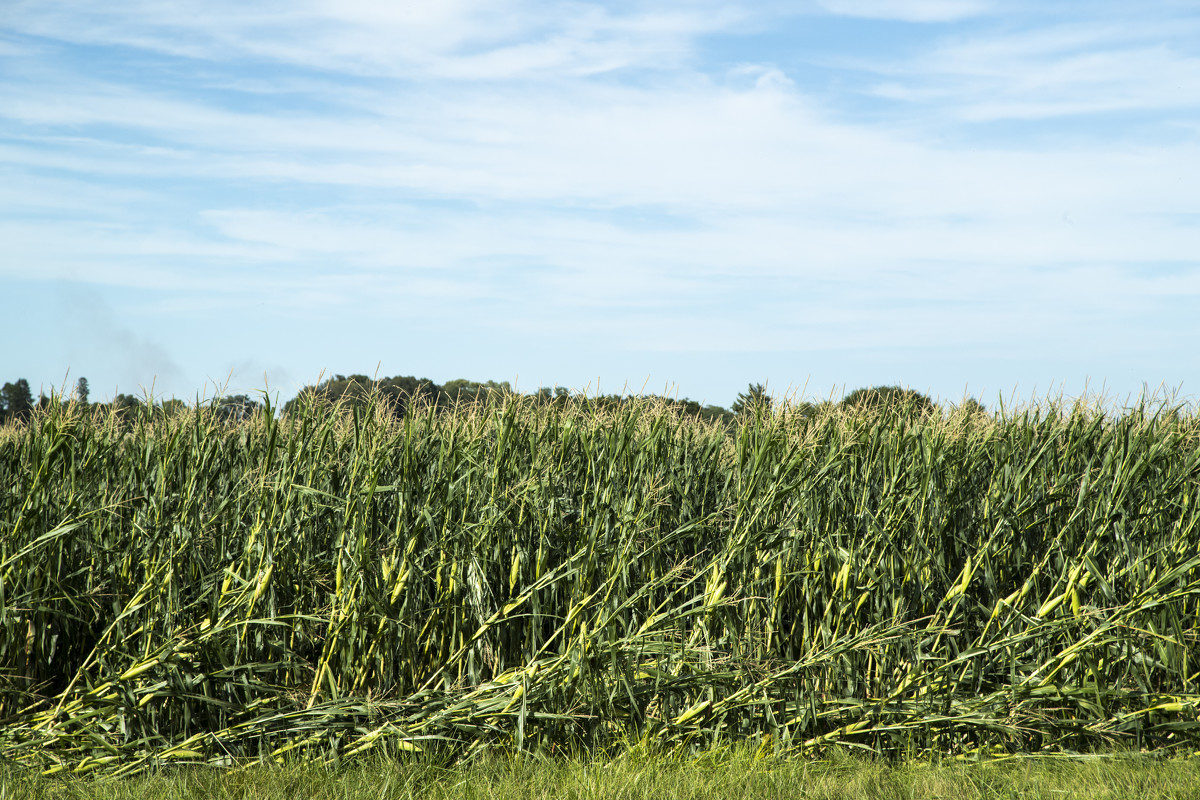
Stocks of corn are damaged, Tuesday, Aug. 11, 2020, after a storm in North Liberty, Iowa. ( Joseph Cress/Iowa City Press-Citizen via AP)
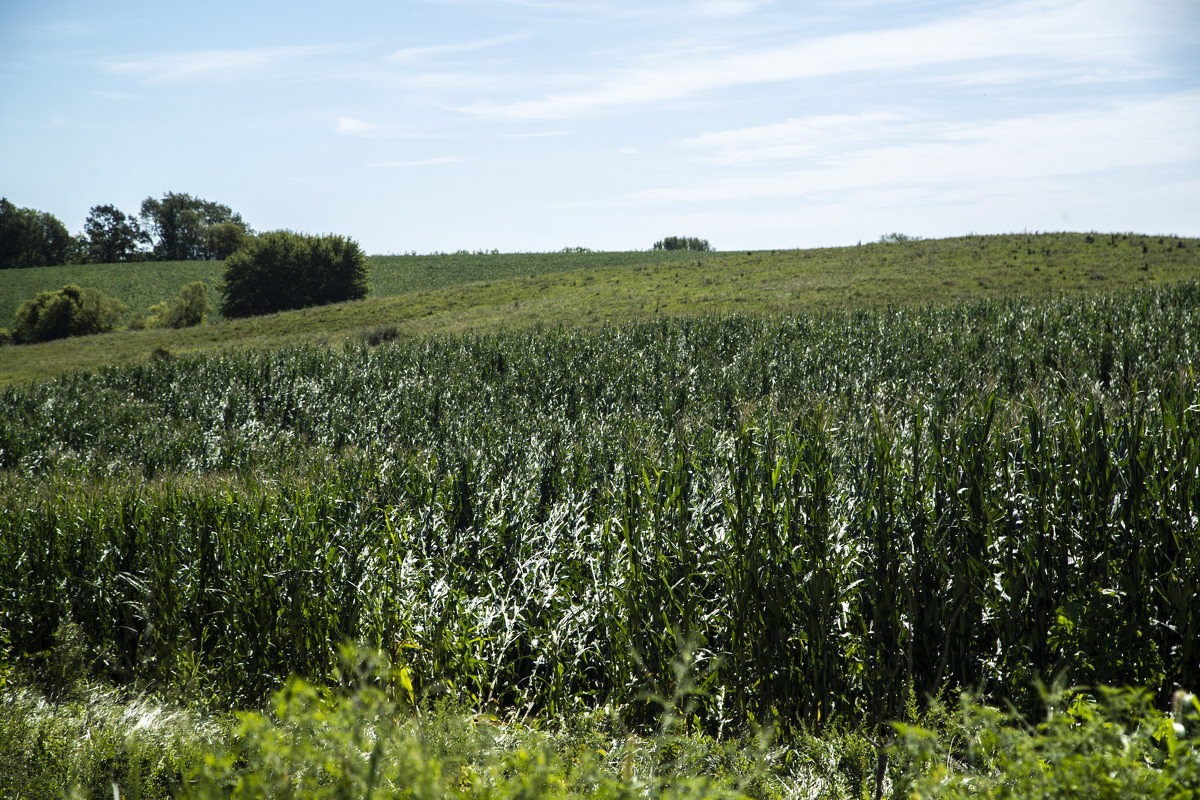
A damaged corn farm is seen, Tuesday, Aug. 11, 2020, after a derecho storm in Johnson County, Iowa. (Joseph Cress/Iowa City Press-Citizen via AP)
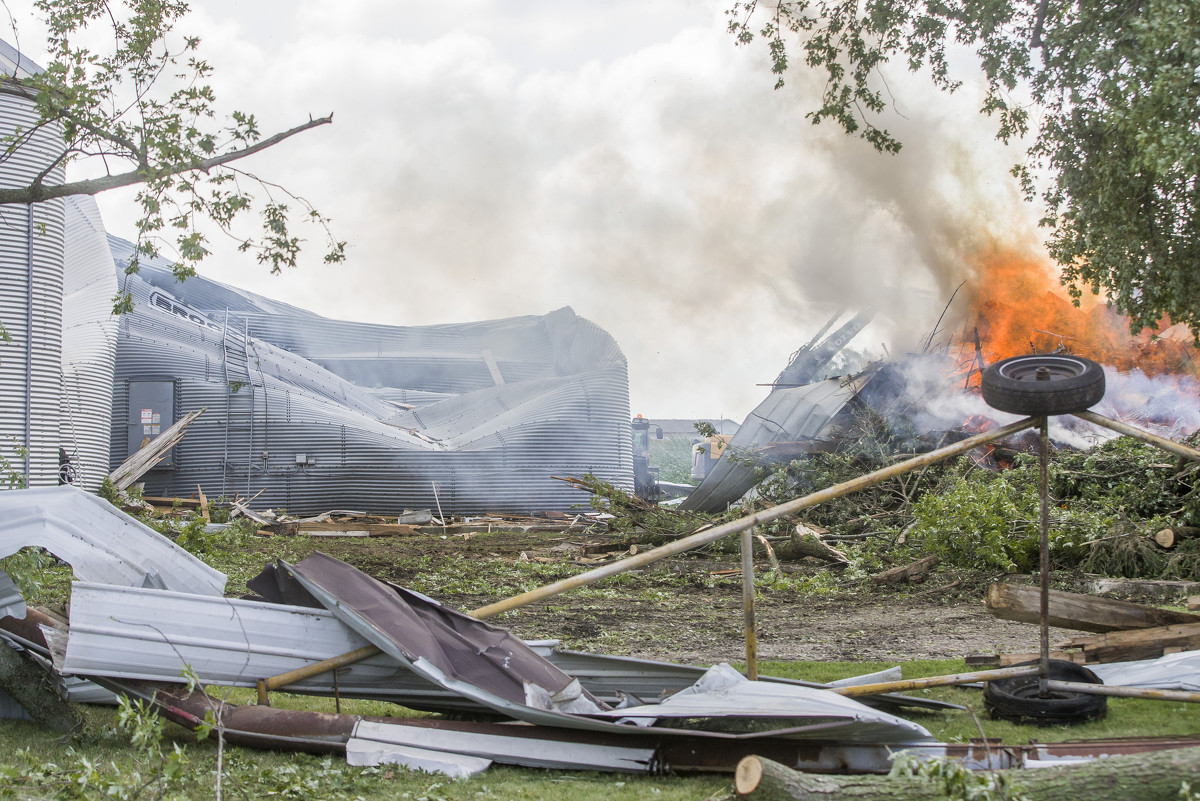
Residents begin cleaning up storm damage from dangerous straight-line winds and possible tornadoes caused by a rare derecho on Tuesday, Aug. 11, 2020, in Wakarusa, Ind. (Robert Franklin/South Bend Tribune via AP)

As wildfires burn throughout the Western Slope, the sun sets a bright orange behind the Rocky Mountains for residents of the eastern plains Wednesday, Aug. 12, 2020, in Denver. Forecasters predict the warm weather will persist, vexing firefighters as they deal with the wildland blazes. (AP Photo/David Zalubowski)
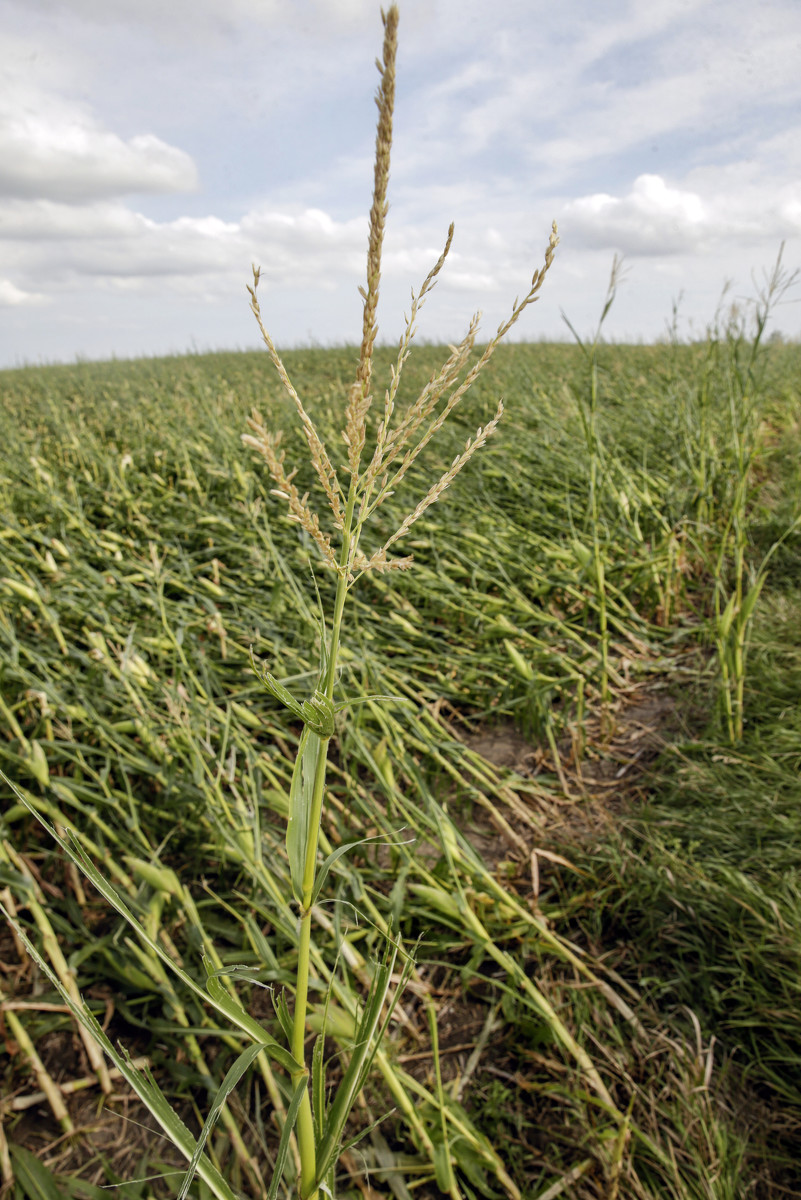
Corn lays nearly flat in a field south of Keystone, Iowa, on Wednesday, Aug. 12, 2020. A storm slammed the Midwest with straight line winds of up to 100 miles per hour on Monday, gaining strength as it plowed through Iowa farm fields, flattening corn and bursting grain bins still filled with tens of millions of bushels of last year's harvest. (Jim Slosiarek/The Gazette via AP)
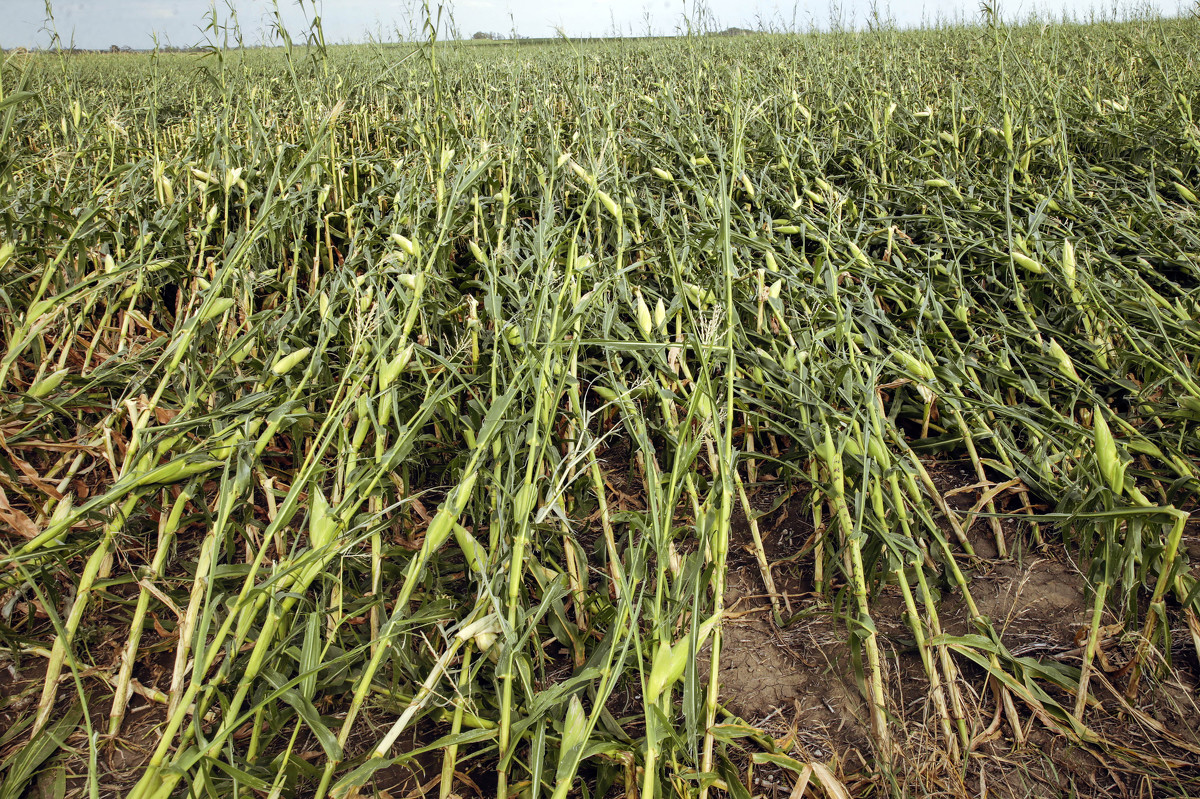
Corn lays nearly flat in a field south of Keystone, Iowa, on Wednesday, Aug. 12, 2020. A storm slammed the Midwest with straight line winds of up to 100 miles per hour on Monday, gaining strength as it plowed through Iowa farm fields, flattening corn and bursting grain bins still filled with tens of millions of bushels of last year's harvest. (Jim Slosiarek/The Gazette via AP)
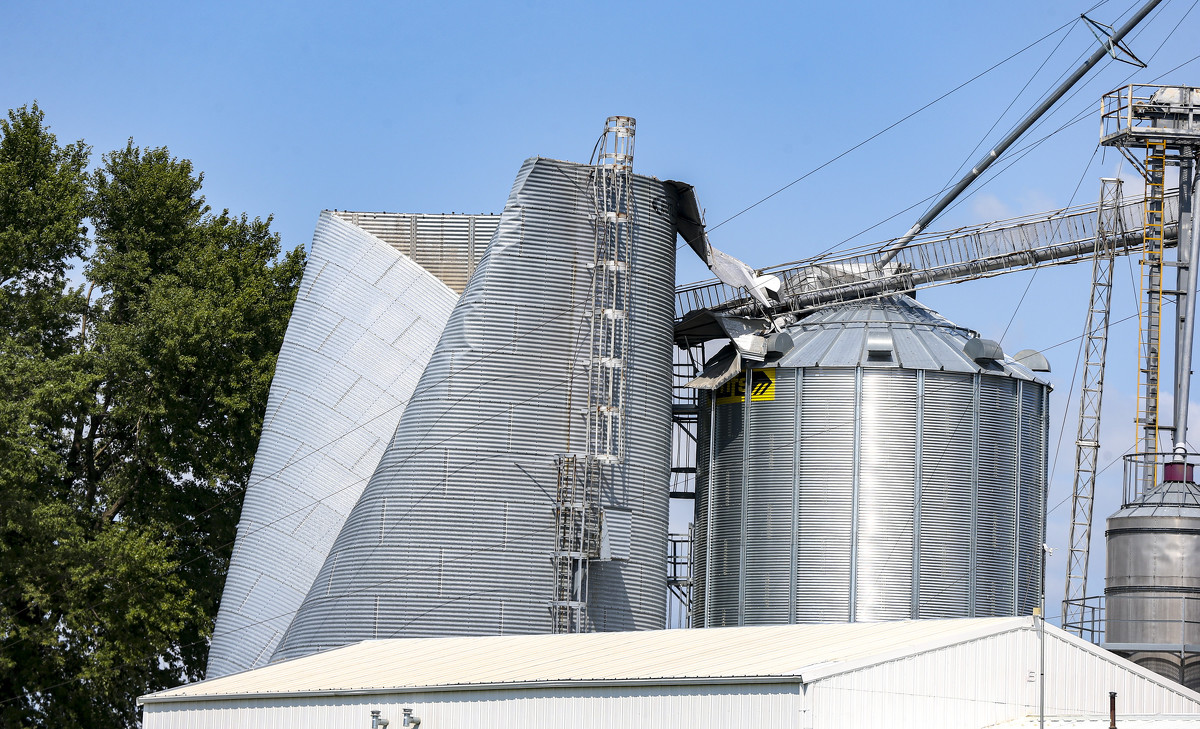
A damaged silo stands Wednesday, Aug. 12, 2020, near Solon, Iowa. Farmers across a wide swath of Iowa are dealing with the aftermath of a rare wind storm that turned what was looking like a record corn crop into deep losses for many. The storm, known as a derecho, slammed the Midwest with straight line winds of up to 100 miles per hour Monday, gaining strength as it plowed through Iowa farm fields, flattening corn and bursting grain bins still filled with tens of millions of bushels of last year's harvest. (Andy Abeyta/The Gazette via AP)